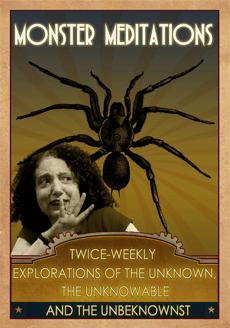I woke up with an idea that would take the novel-in-progress in a different, and more vivid, direction. It was an itchy and very uncomfortable feeling. As I made notes over my morning coffee, I stopped three times to check myself for hives.
YES, I was that itchy!
I spent the rest of that day on edge, processing the new idea before I could even attempt to add it to the crazy quilt of storylines and tangents/Red Herrings that are part of this novel’s mix. That uncomfortable itch is very much a part of the tension in the story. It motivates the characters and aggravates the writer. That itch is very important.
As I began to integrate the new idea I saw how it pulled on the existing threads of the story, tightening some and tying others in knots. This made me wonder about old-fashioned outlines and the many programs now available to make writing a novel “easier.” Do other writers really use them? I can’t seem to find my way to a systematic modus operandi (M.O.). Every time I try to draw a picture of the twists and turns of this plot I wind up back where I started — keeping the stray threads in my head and weaving them in as needed.
I guess this would categorize me as a “panster” — as in writes by the seat of her pants — but I think it’s more accurate to describe me as an itchy weaver, pulling at various threads as I weave the story together.
Am I taking a risk with this “no net” style of writing? Yes.
Have I figured out another way to write this novel? Nope. I’m stuck with the itchy feeling and 200-plus pages of the first draft. With about two thirds already drafted, the itch of the final third is almost unbearable. It’s time to get back to writing — AKA weaving — my way to the finish line.





I quite like the term itchy weaver. I’m a bit between a plotter and a panster, but whenever it comes time to get to a second novel, I think I’ll do much better to plot more of it out. It’s just how my brain works, though I love writing blind when it comes to short stories.
I’ve honestly tried to outline and I’ve tried some to do those wacky diagrams where everything interconnects — I’d rather spend the time writing!
Yes, I do think we get better as we go along and that the second novel and the third and the fourth… will make certain aspects of writing easier. I’ve been at this for a while. I’m better than I was… but still have a ways to go.
I am a full on pantser and basically do the same thing. I’ve never understood nor been able to use outlines. Which was always one of the things they marked me down for in school.
In school, I remember writing an outline AFTER I wrote a paper. LOL! I wanted my A.
I love the interface on your website and always enjoy writers writing about writing! (as opposed to artists talking about art-making, which is often dreadful)
Maybe artists should draw about drawing and sculpt about sculpting? Especially when the writing about painting is a painful to read.
I used to be a pantser until I’d written myself into a corner one too many times. Now I SWEAR by outlining! It helps me put forethought into my novels like never before and solves the problem I used to have of “what am I going to write today…” especially given that I don’t get chunks of time like those writers with older kids (or none at all). Of course, my outlines are guidelines, and I go outside the box all the time, as I progress through the novel.
I like the idea of an outline as a guide. I will admit to jotting down notes about the threads that I’m pulling as I write. The more complicated the plot, the more threads to pull and mysteries need misdirection as well as direction. I commend you for “doing it all” with little kids around it’s hard to focus.